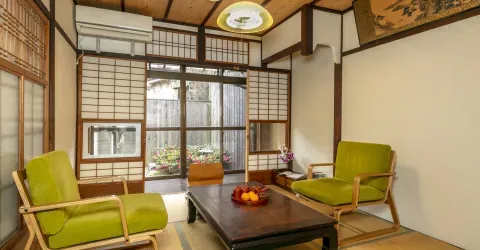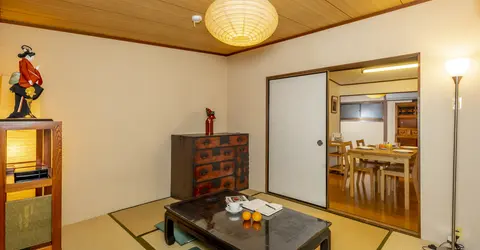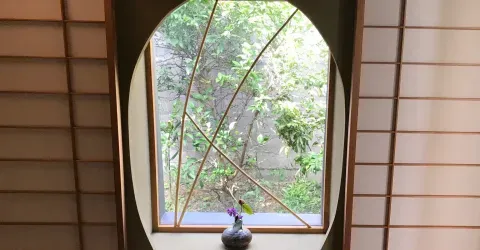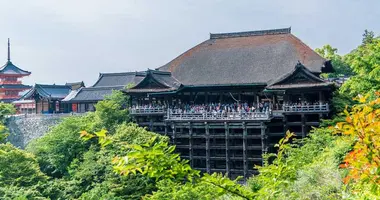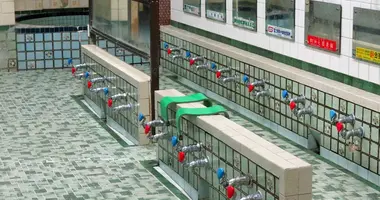Azuchi Castle: Oda Nobunaga's revolutionary fortress
- Published on : 27/06/2024
- by : Japan Experience
- Youtube

Replica of the original keep of Azuchi Castle
Azuchi Castle, built by the legendary warlord Oda Nobunaga between 1576 and 1579, stands as a testament to architectural innovation and political ambition in 16th century Japan. Located on the eastern shores of Lake Biwa in present-day Shiga Prefecture, this magnificent structure ushered in the Azuchi-Momoyama period of Japanese history. Though short-lived, Azuchi Castle revolutionized castle design and symbolized Nobunaga's aspirations for power and unification. Its grandeur and innovations continue to captivate historians and enthusiasts alike, offering insights into a pivotal era of Japanese history.
Historical background and significance
Azuchi Castle emerged during a tumultuous period in Japanese history known as the Sengoku or Warring States period. Oda Nobunaga, one of the most powerful warlords of his time, commissioned the castle as part of his ambitious plan to unify Japan. The castle's construction began in 1576, shortly after Nobunaga's victory at the Battle of Nagashino, and was completed in 1579.
The castle's location was strategically chosen. Situated on Mount Azuchi, it provided an excellent vantage point over Lake Biwa and the surrounding areas. This position allowed Nobunaga to monitor and control crucial trade routes and communication lines between his greatest rivals - the Uesugi to the north, the Takeda in the east, and the Mōri to the west.
Azuchi Castle's significance extends beyond its military function. It represented a shift in castle design and purpose, moving from purely defensive structures to symbols of power and prestige. The castle's lavish decorations and innovative architecture were meant to impress and intimidate Nobunaga's rivals, showcasing his wealth, power, and cultural sophistication.
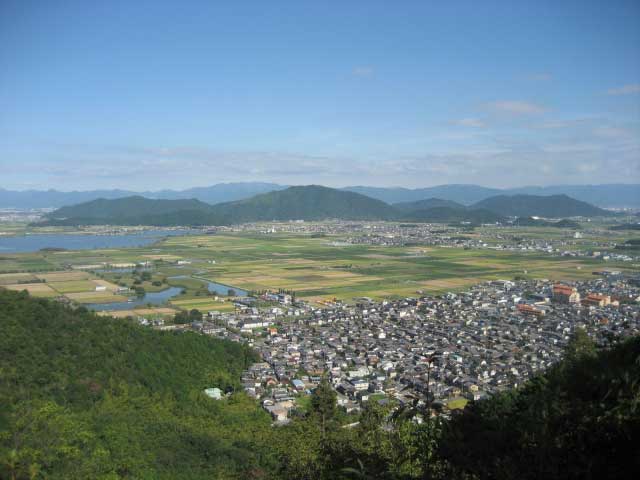
View from Azuchi Castle over the surrounding countryside
Architectural innovations and design features
Azuchi Castle introduced several revolutionary features that set it apart from earlier Japanese castles and influenced castle design for generations to come. The most striking innovation was the central keep or tenshu, a seven-story tower that stood approximately 138 feet tall. Unlike the solid white or black exteriors of previous castles, Azuchi's tenshu was a colorful spectacle, with each level painted in different hues and adorned with gold leaf.
The castle's stone base was another significant innovation. Azuchi Castle was one of the first in Japan to use massive stone walls as a foundation, a technique that would become standard in later castle construction. These walls, ranging from 5.5 to 6.5 meters in thickness, were built using a technique called nozura-zumi, where large stones were fitted together without mortar.
The interior of the castle was equally impressive. The tenshu contained audience halls, private chambers, offices, and a treasury, decorated with elaborate paintings by the renowned artist Kanō Eitoku. The fifth floor was particularly noteworthy, featuring an octagonal shape - a rarity in Japanese architecture of the time.
Another unique feature was the extensive use of fusuma (sliding doors) painted with scenes from nature and Chinese classics. These not only served as practical room dividers but also as stunning works of art that reflected Nobunaga's appreciation for culture and refinement.
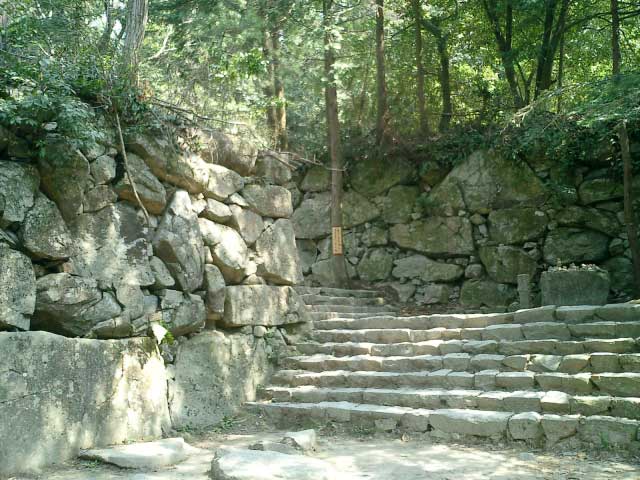
Stone walls of Azuchi Castle
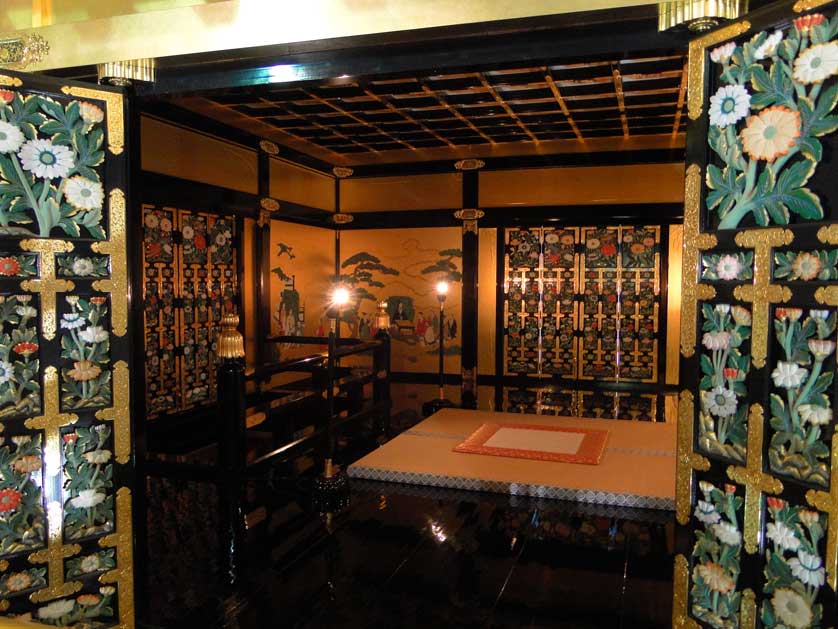
The reconstruction captures the original magnificence and splendor of Oda Nobunaga's Azuchi Castle in Shiga Prefecture
Strategic importance and location
Azuchi Castle's location was carefully chosen to maximize its strategic value. Situated on Mount Azuchi, which rises about 100 meters above Lake Biwa, the castle commanded an expansive view of the surrounding area. This vantage point allowed Nobunaga to monitor movement along key transportation routes, including the vital Nakasendo highway.
The castle's proximity to Kyoto, the imperial capital, was also strategically significant. It was close enough for Nobunaga to exert influence over the capital, yet far enough to be safe from the fires and conflicts that frequently plagued the city. This location allowed Nobunaga to maintain a delicate balance between demonstrating his power and respecting the traditional seat of authority.
Moreover, the castle's position at the intersection of several important roads made it a hub for communication and trade. This strategic location allowed Nobunaga to control the flow of goods and information, further consolidating his power in central Japan.
Life in Azuchi Castle and its surrounding town
Life in and around Azuchi Castle was a microcosm of the social and cultural changes occurring in late 16th century Japan. The castle itself was not just a military fortification but also Nobunaga's residence, administrative center, and a symbol of his power. The lavish interiors, adorned with gold leaf and intricate paintings, hosted important political meetings and cultural events.
Nobunaga encouraged the development of a castle town at the foot of Mount Azuchi. He issued a municipal charter in 1577, offering tax exemptions and other incentives to attract residents. By 1582, the town's population had grown to approximately 5,000, including merchants, artisans, and samurai.
The castle town was carefully planned, with well-defended homes for Nobunaga's generals and a Buddhist temple called Sokenji. Nobunaga also built residences for commoners along the shore of Lake Biwa. To stimulate economic activity, he mandated that all travelers on the Nakasendo highway stay overnight in the town, bringing business to local innkeepers.
Azuchi Castle also played host to significant cultural and religious events. In 1579, it was the site of a famous religious debate between leaders of the Nichiren and Jodo sects of Buddhism, reflecting Nobunaga's interest in religious matters and his efforts to control religious institutions.
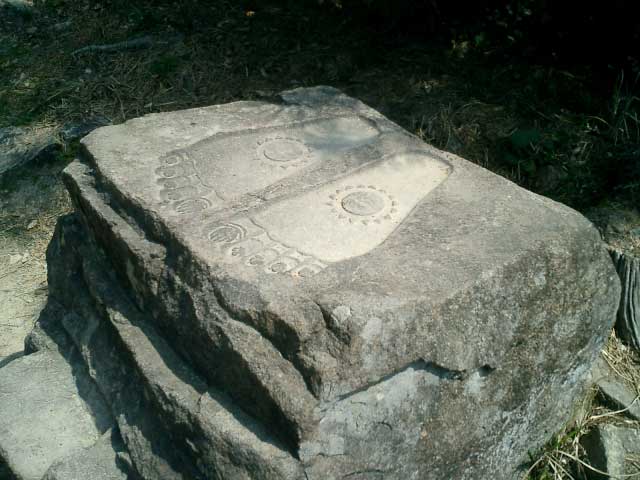
Buddha's Footprints, Azuchi Castle, Shiga Prefecture
The fall of Azuchi Castle
The grandeur of Azuchi Castle was short-lived. In June 1582, just three years after its completion, Oda Nobunaga met his end at Honnoji Temple in Kyoto, betrayed by his retainer Akechi Mitsuhide. This event, known as the Honnō-ji Incident, marked the beginning of the end for Azuchi Castle.
In the chaos following Nobunaga's death, the castle fell into the hands of Akechi Mitsuhide. However, Mitsuhide's triumph was short-lived. He was defeated by Toyotomi Hideyoshi, another of Nobunaga's generals, at the Battle of Yamazaki just thirteen days after Nobunaga's death.
The exact circumstances of Azuchi Castle's destruction remain somewhat unclear. Some accounts suggest that the castle was set ablaze by retreating Akechi forces, while others claim it was burned by looters or possibly by one of Nobunaga's sons. Regardless of the specific cause, the magnificent tenshu and main bailey of Azuchi Castle were reduced to ashes within weeks of Nobunaga's death.
The destruction of Azuchi Castle symbolized the end of Nobunaga's bid for power and the beginning of a new phase in the unification of Japan under Toyotomi Hideyoshi. Today, only the stone base and some foundation stones remain as testament to the castle's former glory.
Legacy and cultural impact
Despite its brief existence, Azuchi Castle left an indelible mark on Japanese history and culture. Its innovative design and construction techniques revolutionized castle architecture in Japan, influencing the design of many subsequent castles. The Azuchi-Momoyama period, named partly after this castle, is renowned for its distinctive artistic and architectural style.
The castle's lavish decoration and use of art as a display of power set a new standard for elite residences. The fusion of military functionality with artistic beauty in Azuchi Castle reflected the changing role of the samurai class, who were increasingly expected to be not just warriors, but also cultured administrators.
Azuchi Castle also played a significant role in the development of Japanese painting. The large-scale works commissioned for the castle by artists like Kanō Eitoku helped establish the Kanō school as the dominant painting style of the era.
In modern times, Azuchi Castle continues to captivate the imagination of historians and the public alike. Although the original structure is lost, its legacy lives on through archaeological research, artistic reconstructions, and its enduring influence on Japanese castle design. The castle site, designated as a Special National Historic Site, attracts numerous visitors each year, testament to its ongoing cultural significance.
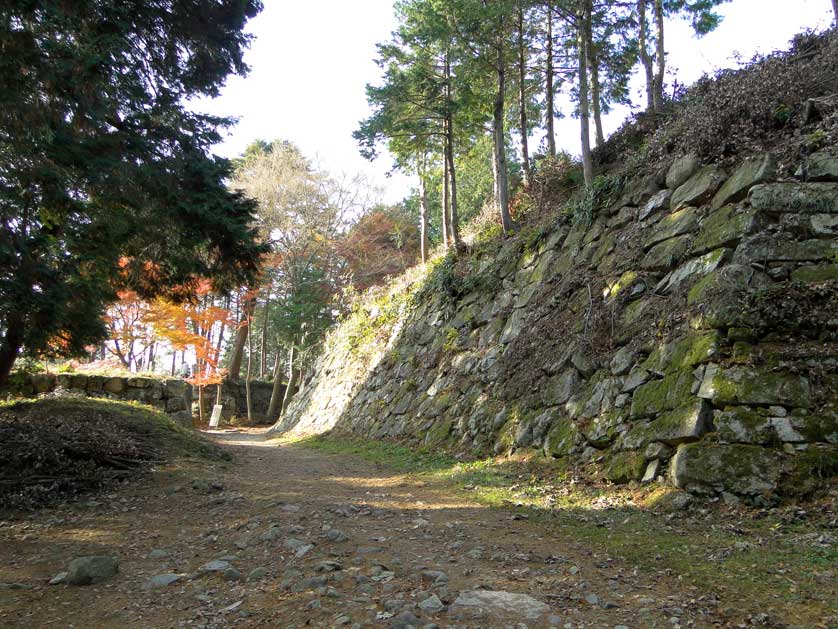
Though now in ruins, the stone walls of Azuchi Castle make for a spectacular sight
Azuchi Castle today: Ruins and reconstructions
Today, visitors to the Azuchi Castle site can explore the remnants of this once-magnificent structure and gain insights into its historical significance. The most prominent features that remain are the impressive stone walls, which still convey the castle's massive scale and innovative construction techniques. These walls, built without mortar, have withstood the test of time and continue to impress visitors with their precision and durability.
Archaeological excavations at the site have uncovered numerous artifacts, providing valuable information about the castle's structure and the daily life of its inhabitants. These findings are displayed at the Azuchi Castle Archaeological Museum, located near the castle ruins. The museum offers visitors a chance to see recovered tiles, ceramics, and other objects that once adorned the castle.
While the original tenshu no longer stands, visitors can get a sense of its grandeur at the Nobunaga no Yakata Museum. This museum houses a full-scale replica of the top floors of Azuchi Castle's donjon, based on historical records and archaeological evidence. The replica showcases the lavish decoration and innovative design that made Azuchi Castle so revolutionary for its time.
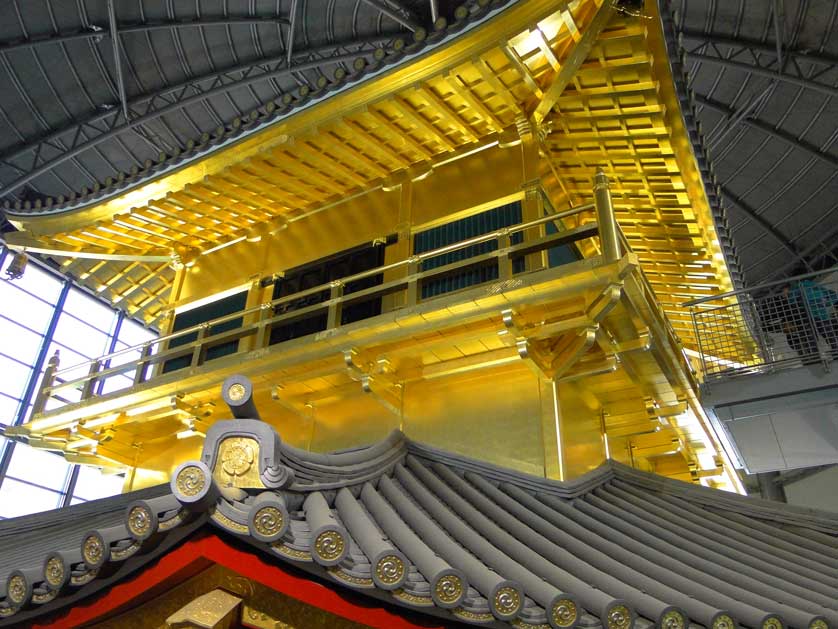
The Nobunaga no Yakata Museum has a replica of the original keep of Azuchi Castle
For those seeking a more complete visual representation, a detailed miniature model of the entire castle complex can be found at the Ise in Mie Prefecture. This model, part of the Azuchi-Momoyama Culture Village, offers a comprehensive view of what the castle might have looked like in its heyday.
To help visitors navigate the site and understand its layout, a detailed Map of Azuchi Castle is available. This resource is invaluable for understanding the castle's strategic position and the layout of its various structures.
Accessing the Azuchi Castle site is relatively straightforward. It's located about a 30-minute walk from Azuchi Station on the JR Biwako Line. For those traveling from major cities, Azuchi is about 45 minutes from Kyoto by JR train, or can be reached via the shinkansen to Maibara Station, followed by a short local train ride.
While the original Azuchi Castle may be lost to time, its ruins, reconstructions, and the wealth of historical information available continue to offer visitors a fascinating glimpse into this pivotal period of Japanese history. Whether you're a history enthusiast, an architecture buff, or simply curious about Japan's rich cultural heritage, a visit to the Azuchi Castle site promises a rewarding and enlightening experience.
